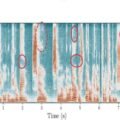Rocky exoplanets are widely considered the best places to search for extraterrestrial life. However, a first of its kind study by a geologist and an astronomer has determined that the vast majority of these alien worlds are probably no place like home. Using data from Kepler, Hubble and other space watching telescopes, the study also recommends redefinition of what it means for a planet to be “Earth-like.”
BACKGROUND: ROCKY EXOPLANETS AND THE SEARCH FOR E.T.
Since the first exoplanet was discovered in 1995, astronomers have searched for a twin to Earth. Although no such analogue has yet been found, numerous promising candidates await further analysis. Unfortunately, limitations to current telescopes and other observation tools has made a more detailed survey of these alien worlds difficult to perform. New observatories like the James Webb Telescope or the proposed LUVIOR space observatory, the former of which is scheduled to be launched next month, offer some hope. But those cutting edge observation platforms are still limited in the data they can gather about an exoplanet’s actual material composition.
To help astronomers narrow the search for “Earth 2,” Sivi Xu, an astronomer from the National Science Foundation’s NOIRLab teamed up with Keith Putirka, a geologist from California State University, Fresno, hoping that their particular specializations could work together in this unique type of search.
“I met Keith Putirka at a conference and was excited that he could help me understand the systems that I was observing,” said Xu in the press release announcing their study’s results. “He taught me geology and I taught him astronomy, and we figured out how to make sense of these mysterious exoplanetary systems.”
ANALYSIS: STUDYING THE ATMOSPHERES OF WHITE DWARFS
Astronomers currently lack the capabilities to directly measure the composition of rocky exoplanets, so the duo studied the atmospheres of white dwarfs. That’s because white dwarfs are stars that used to be like our sun, only they have exhausted their nuclear fusion life cycle and collapsed. When this occurs, white dwarfs that have planets or asteroids in their orbits pull all of that material into their atmospheres, including any rocky exoplanets. The result is something astronomers term “polluted white dwarfs.”
This material is discernible to astronomers using the Keck Observatory in Hawai’i and the Hubble Space Telescope, as well as some other observatories, because the atmospheres of the white dwarfs before they become polluted are almost exclusively helium and hydrogen. Everything else these precision instruments measure almost surely came from material absorbed into the defunct star’s atmosphere.
The Debrief previously reported on a similar study of polluted white dwarfs, and how those star systems may provide an analogue for our own future.
Xu and Putirka studied the atmospheres of 23 white dwarfs in total, and all were within 650 light years of our solar system.
Published in the journal Nature Communications, their results showed that only one of the 23 had a rocky exoplanet whose material composition was similar to Earth. The other polluted white dwarf atmospheres showed evidence of rocky exoplanets, but the actual composition of the materials from those planets indicated they were nothing like Earth.
“While some exoplanets that once orbited polluted white dwarfs appear similar to Earth, most have rock types that are exotic to our Solar System,” said Xu. “They have no direct counterparts in the Solar System.”
Some of these rocky exoplanet compositions were so unusual and unlike any found in our solar system that the research team said they had to invent new names to identify and classify them.
OUTLOOK: EARTHLIKE IS NOT EARTHLIKE ANYMORE
This research does not indicate that the unique composition of the rocky exoplanets absorbed into the atmospheres of white dwarfs either precludes or improves the chances for extraterrestrial life, but instead more likely affects the way a planet’s material moves and shapes the terrain through different plate tectonic mechanisms.
The duo’s research did highlight the need to better classify rocky exoplanets rather than the more commonly used “Earth-like,” which at present includes exoplanets that are similar to Mars, Venus or even Mercury in composition.
“Mercury, Earth, Moon, and Mars are all “Earth-like” in astronomical terms, but vastly different geologically,” the paper explains. “We thus reserve the term “Earth-like” for planets that are more similar to Earth than they are to Mars, Mercury, or the Moon, etc., and recommend modifiers such as “Mars-like” or “Mercury-like”, etc., as occasion demands.”
Follow and connect with author Christopher Plain on Twitter: @plain_fiction
